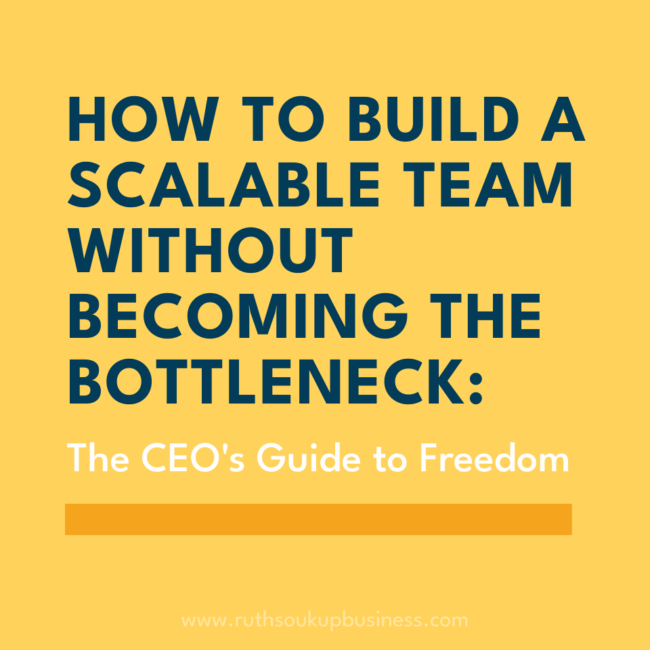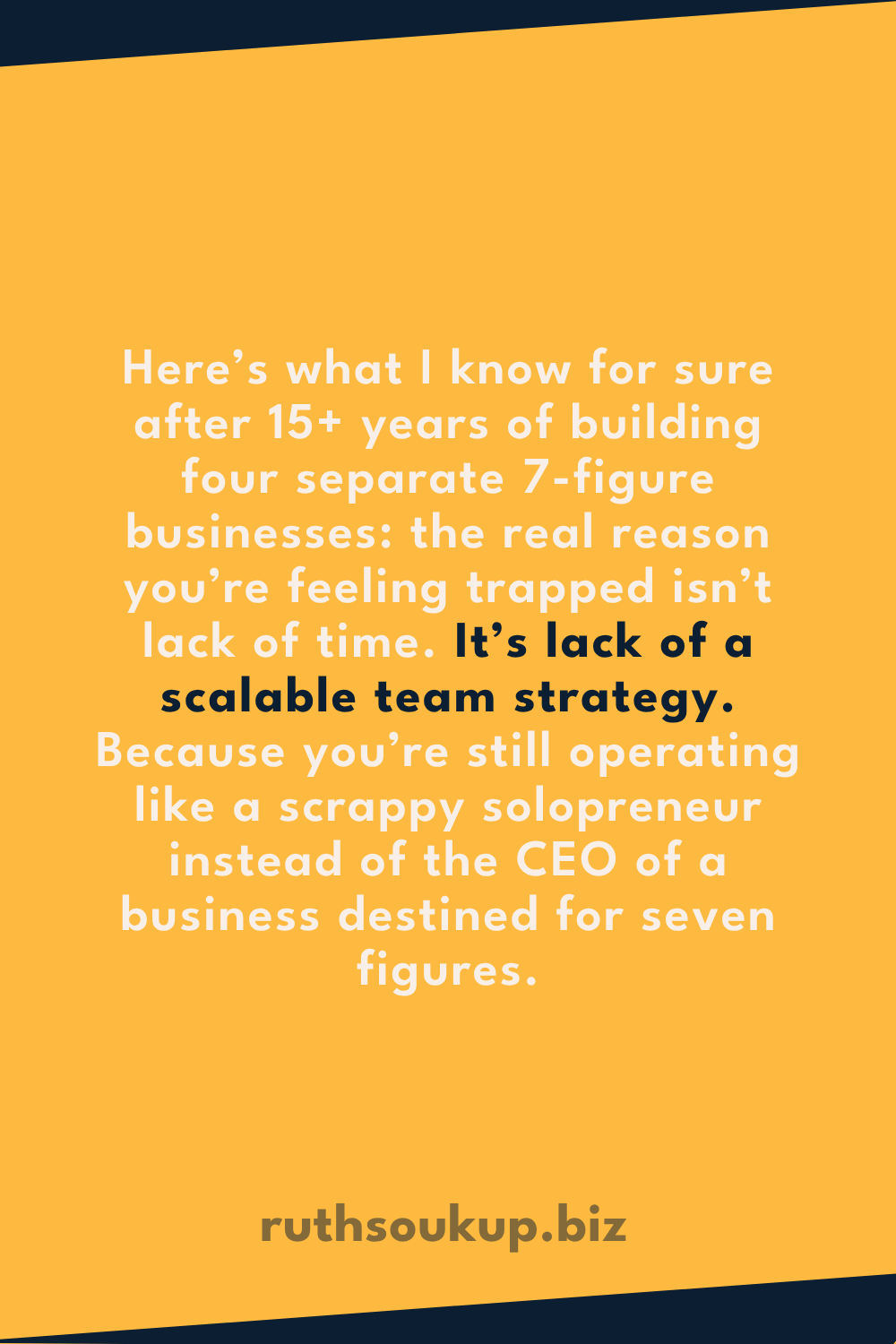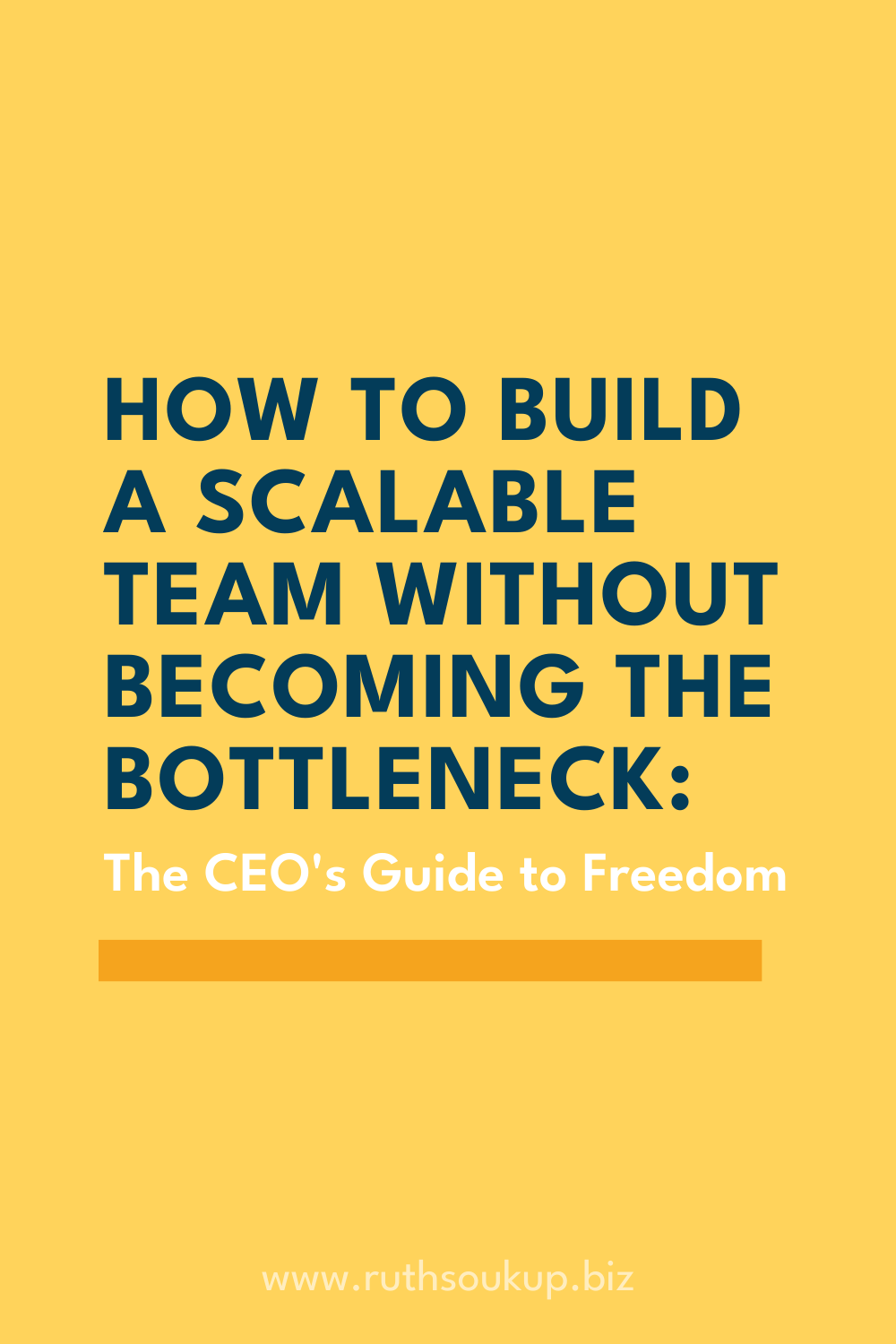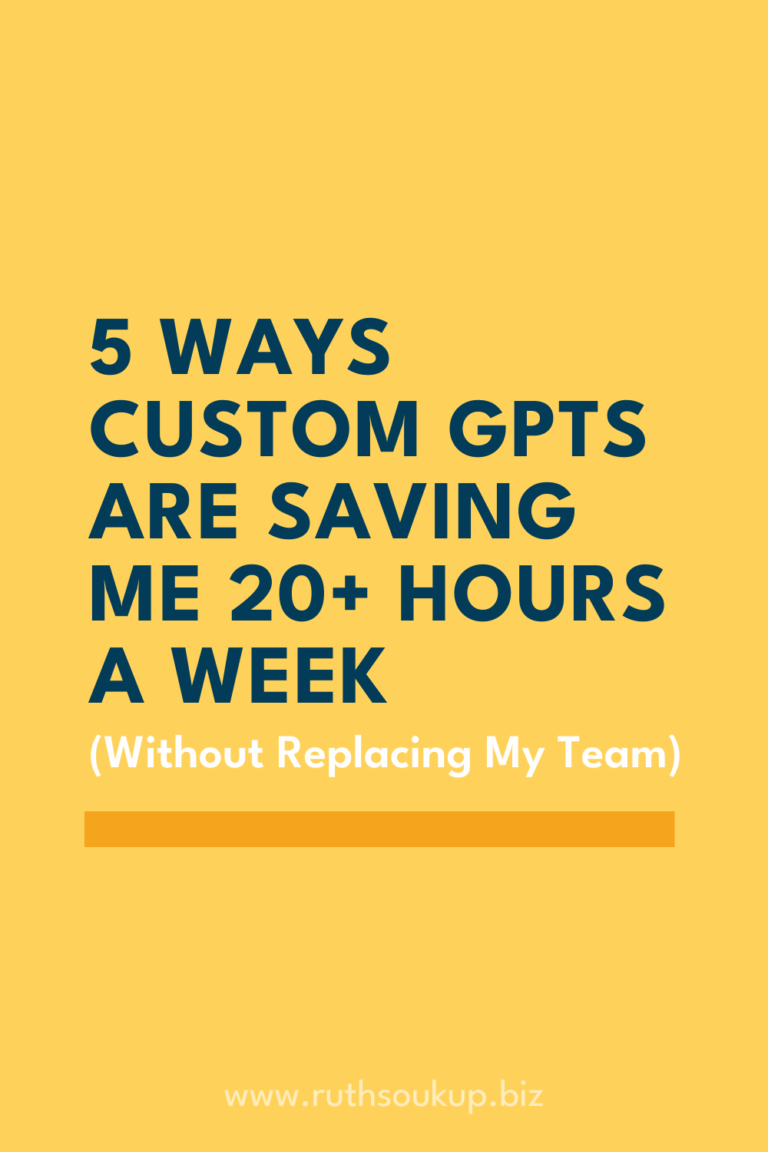How to Build a Scalable Team Without Becoming the Bottleneck: The CEO’s Guide to Freedom

You’re Not “Too Busy” to Build a Team. You’re Stuck.
If you’re anything like most high-achieving entrepreneurs I work with, you didn’t start your business just to create another 60-hour-a-week job for yourself.
And yet…here you are.
Juggling DMs at midnight. Writing emails during your kid’s soccer game. Updating your funnel on weekends. Managing your VA (when you remember to assign her tasks). Launching new offers while also handling customer service. Plus somehow trying to have a life outside of your laptop.
Sound familiar?

You’re Not Meant to Scramble for Sales
There’s a difference between having a business… and having a business that actually supports your life.
The Daily Sales Incubator is where entrepreneurs step into the next level—where sales become consistent, confidence returns, and momentum finally sticks.
Every conversation moves your business forward.
Every action builds trust.
Every day brings in revenue.
If you know you’re meant for more, this is your next step.
Here’s what I know for sure after 15+ years of building four separate 7-figure businesses: the real reason you’re feeling trapped isn’t lack of time. It’s lack of a scalable team strategy.
Because you’re still operating like a scrappy solopreneur instead of the CEO of a business destined for seven figures.
And when it comes to building your team, most entrepreneurs get it completely wrong. They either wait way too long (hello, burnout), hire too fast without systems (hello, chaos), or scale in a way that actually makes them work harder instead of smarter.
If you’re ready to stop being the bottleneck and start building a business that runs without you constantly pushing the boulder uphill, it’s time to get strategic about your team. Let me show you the real path forward.
My $25 Million “Expensive Lesson” in Team Building
Let me be brutally honest. I was a terrible manager when I started.
For way too long, I thought “delegating” meant handing off whatever random tasks I didn’t feel like doing anymore.
“Here’s my inbox. Good luck!” “Can you just handle my social media?” “I need you to read my mind and fix all the things.”
Spoiler alert: It didn’t work.
I wasted thousands of dollars and countless hours training the wrong people for the wrong roles. I hired “helpers” instead of strategic operators. I micromanaged tasks instead of leading outcomes. And I stayed stuck in the weeds far longer than I should have.
It wasn’t until I nearly burned out my entire business (and myself) that I realized the problem: I was building a team around me instead of around systems.
That pivotal shift—from people-dependent to systems-driven—changed everything. It’s how I went from a single “mommy blog” to a multimillion-dollar ecosystem with multiple brands (Living Well Spending Less, Elite Blog Academy, Thinlicious, and Ruth Soukup Business) that generate consistent revenue whether I’m working or not.
The truth? You can’t scale what you can’t systematize. And you can’t systematize if you’re still the one doing all the things.
Why Most Online Entrepreneurs Build Teams Backward
Before we dive into what works, let’s talk about why so many smart, capable entrepreneurs (maybe even you) get team-building so wrong.
Mistake #1: The “I’ll Just Hire a VA” Band-Aid
When you’re drowning in tasks, hiring a general virtual assistant seems like the answer. But without clear systems, documentation, or strategic direction, you end up with someone waiting around for your instructions or—worse—doing tasks that aren’t moving the needle.
Mistake #2: The “I Can’t Afford It Yet” Trap
I hear this constantly from 6-figure business owners: “I’ll hire when I hit [insert arbitrary revenue goal].” But here’s the paradox: you can’t hit that next revenue goal if you’re still trapped doing $15/hour tasks. You’re literally capping your income.
Mistake #3: The “I Can Do It Better Myself” Bottleneck
Yes, you probably can do it better. At first. But if your goal is a 7-figure business that doesn’t consume your life, you need to get comfortable with “good enough” execution from your team while you focus on high-leverage CEO work.
Mistake #4: The “More People Will Solve the Problem” Myth
Adding more team members to a chaotic business without systems is like adding more cooks to a kitchen with no recipes. You don’t need more hands. You need a machine.
I’ve personally made every single one of these mistakes. And each one cost me time, money, and freedom. But they also taught me what actually works.
The Strategic Team Building Framework That Actually Scales
If you want to scale your business without becoming the bottleneck, building the right team is non-negotiable. But that doesn’t mean hiring fast or outsourcing everything.
It means being strategic—hiring the right people, for the right reasons, at the right time.
Here’s what I’ve learned (the hard way) after building and rebuilding teams across multiple 7-figure brands:
Phase 1: Get Clear on What Actually Needs to Come Off Your Plate
Don’t hire “help.” Hire outcomes.
Ask yourself: What’s the highest and best use of my time as the CEO?
Everything else—literally everything—needs to be up for delegation.
That usually includes:
- Fulfillment tasks (like onboarding, scheduling, materials delivery)
- Marketing support (posting, formatting, editing, repurposing—not strategy)
- Customer service (basic inquiries, tech support, FAQ responses)
- Administrative tasks (calendar management, email organization, data entry)
Start small if you need to—5 to 10 hours a week is plenty—but be clear about what success looks like in the role. You’re not just buying time. You’re building capacity.
Phase 2: Don’t Delegate What You Haven’t Documented
You can’t outsource chaos. Period.
Before you hand something off, document your process:
- Record a Loom video walking through the task
- Create a basic checklist in Google Docs or Asana
- Add context like “why we do it this way” or “what success looks like”
It doesn’t have to be fancy. It just has to be clear.
This one step alone will save you from weeks of back-and-forth, miscommunication, and frustration. It’s also how you start building a business that can scale beyond you.
Phase 3: Use Tools + Tech to Eliminate Manual Work
Once your core processes are documented, ask: What can we automate or streamline?
That might mean:
- Setting up email sequences for onboarding
- Using AI to generate rough drafts of content or client responses
- Organizing deliverables inside Asana or Trello
- Tracking KPIs in a shared dashboard so your team knows what matters (and so do you)
The more systems you have in place, the easier it becomes to grow without needing more from you.
You’re Building an Ecosystem, Not Just Hiring People
Most overwhelmed entrepreneurs think they have a “people problem.”
“If I could just find the right VA…” “I need a better project manager…” “My team doesn’t get it…”
But in reality? They have a systems problem.
You don’t need more hands. You need a machine.
When you stop thinking of your team as “helpers” and start treating them as integral parts of a scalable, strategic ecosystem, everything changes.
You go from being stuck in day-to-day fires to finally focusing on high-leverage CEO work:
- Growing your brand and visibility
- Optimizing your offers and sales funnels
- Building assets that generate income without your constant input
- Making the big strategic decisions that actually move the needle
And that’s when your business scales beyond you.
FAQ: Building a Scalable Team Without Becoming the Bottleneck
How do I know if I’m the bottleneck in my business?
If nothing moves without you, that’s a bottleneck. You’re stuck in the weeds if you’re still approving every post, answering every email, or making every decision. A true CEO focuses on high-leverage tasks—not day-to-day operations. If your growth stalls when you step away, you don’t just need help—you need systems and strategy.
When is the right time to start building a team?
Now. Waiting until you’re “less busy” or hit some arbitrary revenue milestone is one of the biggest growth traps. If you’re making consistent 5–6 figure months and still doing $15/hour tasks, you’re capping your own income. Start small—5 to 10 hours a week is enough—but start with intention.
What roles should I hire for first in a small business?
Prioritize outcome-based support that gets you out of daily fulfillment and admin:
- Customer service & tech support
- Podcast editing or content repurposing
- Email or funnel management
- Onboarding & delivery for your offers
Don’t hire for vibes. Hire for clear ROI and capacity creation.
What’s the biggest mistake people make when hiring?
Hiring a VA to “help with stuff” without documented systems or defined outcomes. You’ll waste time, burn money, and stay frustrated. Instead, clarify the exact result you want them to own—and build a simple SOP before delegating. You can’t outsource chaos.
Can I scale without building a big team?
Absolutely. You don’t need a huge team—you need a scalable ecosystem. That means documented SOPs, automated onboarding and workflows, clear KPIs that keep everyone aligned, and strategic hires who own specific outcomes. Smart systems + the right people = freedom. Not more chaos.
How do I build systems if I’m already overwhelmed?
Start by recording what you’re already doing. Use Loom to document your process. Create checklists. Add context. Every time you complete a recurring task, systematize it before you do it again. One documented task at a time builds a scalable foundation.
What tools should I use to streamline team communication and tasks?
Keep it simple. For most 6-figure CEOs, these work: Loom (for task walkthroughs), Google Docs (for SOPs and checklists), Asana or Trello (for task tracking), Slack or Voxer (for communication), and Notion (for central hubs, if you’re advanced). Use tools that support your workflow—not add more friction.
What if I’ve hired before and it didn’t work out?
You likely had a systems problem, not a people problem. Most team issues come from vague expectations, lack of documentation, and reactive leadership. The fix? Build before you hire. Define the role, document the tasks, and align on outcomes from day one.
Ready to Stop Being the Bottleneck and Start Scaling Strategically?
Building a team that frees you is not a pipe dream. It’s a process.
One decision. One hire. One documented task at a time.
But here’s the kicker: If you’re serious about getting out of the bottleneck and scaling to 7 figures—you can’t “wing it.”
You need a real system. You need strategic clarity. You need to think like a Powerhouse CEO.
If you’re tired of being trapped in your business and ready to build something that truly scales—if you understand that sustainable growth requires systems, not just hustle—you’re exactly who Powerhouse was built for.
This isn’t about hiring more people to do more tasks. It’s about building strategic infrastructure that transforms how your entire business operates.
Powerhouse is my implementation program for established entrepreneurs who are done being the bottleneck and ready to build businesses that scale systematically.
But here’s the thing: Powerhouse isn’t for everyone.
It’s for business owners who understand that team building without systems is just expensive chaos. It’s for entrepreneurs ready to invest in strategic frameworks, not quick fixes.
Think that’s you?
When your application is approved, you’ll get access to my private training on building scalable business infrastructure—including the exact team-building systems I used to create multiple 7-figure brands that run without me micromanaging every detail.
But first, you need to apply and show me you’re serious about building strategically, not just hiring reactively.
The longer you stay trapped as the bottleneck, the more growth you cap in your business.













